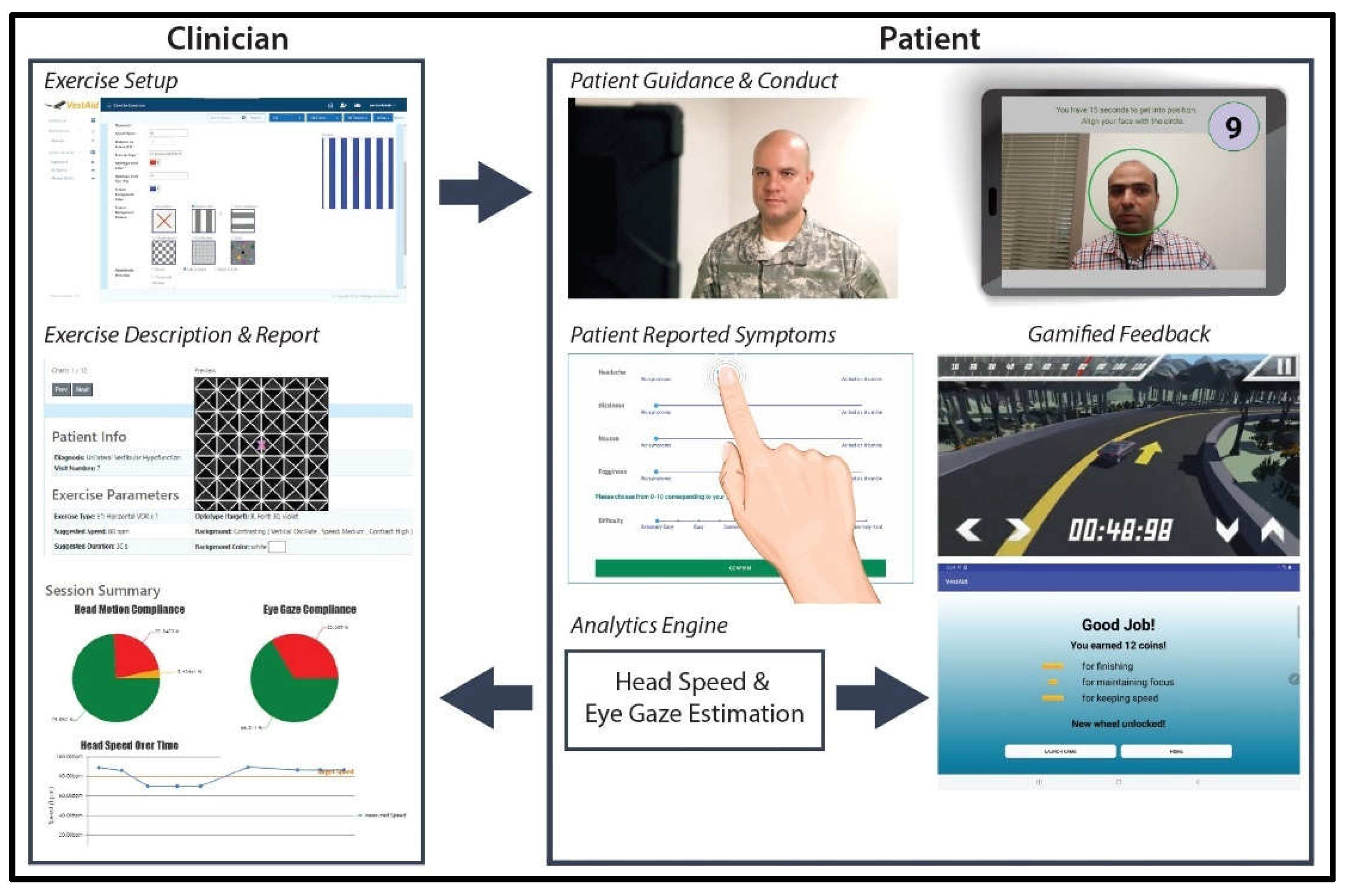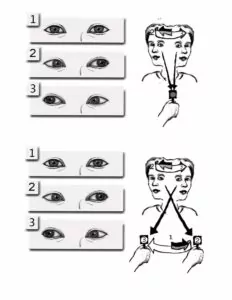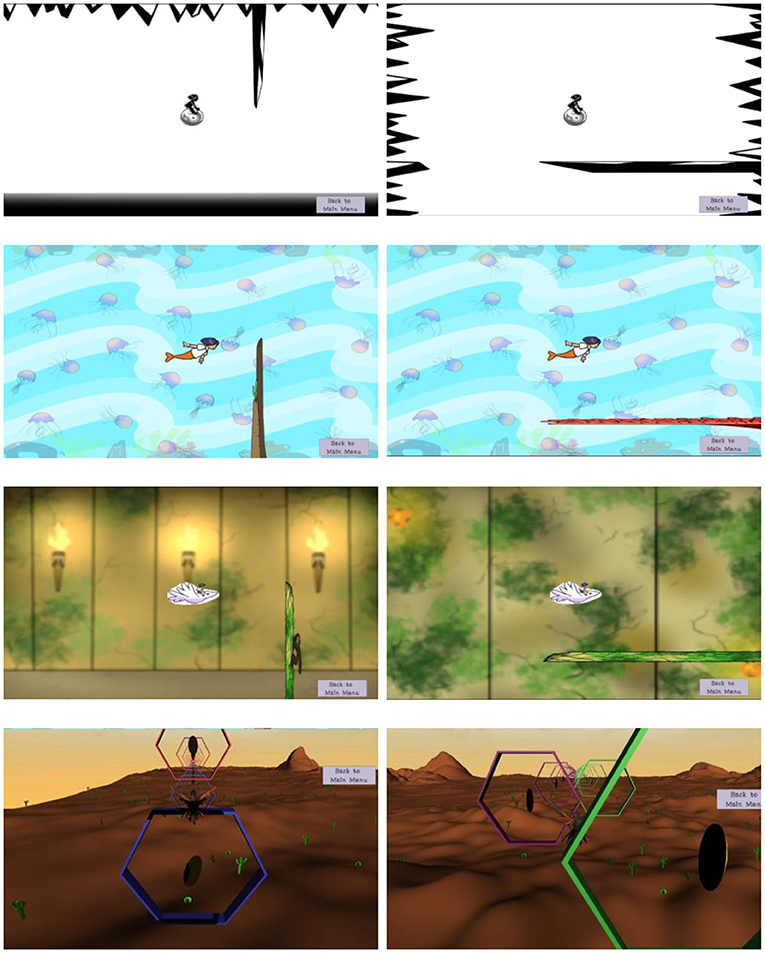vestibular eye exercises pdf
Dont worry if you seem to be stuck at an exercise for a week or more. Vestibular Ocular Exercise Eye Movements keep head still Move eyes up and.

Pdf Vestibular Rehabilitation Therapy Review Of Indications Mechanisms And Key Exercises Semantic Scholar
L Exercises should be performed 3 times a day.

. Results Eye Exercise Category st Rx at least 1x during care Rx during 1 visit Eye-Head Coord. Vestibular rehabilitation exercises are often based on subtle variations of the exercise Myriad combination of treatment variables makes the reporting of exercises. Total 12 minutes a day Eye exercise.
Vestibular Rehabilitation Exercises Level 1. Sitting down focus on an object in front of you while turning your head from side to side. Turn your head about half way 45 degrees to the Right.
Repeat moving your head up and down. Vestibular-Ocular-Reflex VOR Exercises. Next turn your head to so you are facing the target X on the RIGHT.
Eyes feeling stronger and your vision becoming crisper and sharper than you ever thought possible. Headeyes moving in opposite direction Holding a single target keep eyes fixed on target. Some of these exercises will not be suitable for everyone and some are only suitable for certain conditions.
Shrug shoulders 20 times. Level 1 Eye movements head kept still a Look up then down. Gaze stabilization exercises are a reasonable procedure for persons with unilateral vestibular disturbances such as vestibular neuritis or persons who have had tumors of the 8th nerve removed.
Exercises Saccades Rapid eye movements 1 Sit in a comfortable position. Repeat the up-and-down eye motions for one minute. These exercises should be done at least three times a day for a minimum of 6 to 12 weeks or until the dizziness goes away altogether.
Start the exercise by quickly looking at the upper target with just your eyes. Hold a pencil in front of you at arms length away. Standing Change from sitting to standing and back again with eyes open 20 times.
Repeat the one-minute exercises three times a day. The point at which one stops the exercises is when one has no dizziness for two consecutive weeks. Vestibular rehabilitation exercises are.
Keep your head still and move your eyes to look at the target X on the RIGHT. Repeat this sequence for 1 minute. They are also use for bilateral vestibular loss.
Perform head exercises with eyes closed. Repeat 15-20 times Repeat 15-20 times in the opposite direction. However the vestibular-ocular reflex occurs only when the vestibular sys tem is stimulated in other words when the head moves.
95 of patients 86 Standing Static 88 66. Wait 10 seconds after you have done 10 complete turns then do 10 more. To improve the ability of your eyes to work together especially when looking at close objects.
Hold the pencil directly in front of your nose with the tip of the eraser just below eye level. Sitting in bed Focus on finger moving from 3 feet to 1 foot away from face and back again 20 times. The primary role of the inner ear and vestibular system is to allow you to keep your eyes stable and focused on objects as you move your head around.
Then quickly move your gaze from the upper to the lower target then back from the lower to the upper target. Stop this exercise if you develop significant neck ache. Hold your finger pointing upwards in front of you and carry out the shake exercise while staring at your finger.
Do both directions 2-3 times daily. Speed of eye movement should be increased as long as the target stays in focus. Rotate head shoulders and trunk 20 times each.
Carry out the nod exercise with your eyes closed. Left 3 times a day. Do this exercise 3 times each day.
Next turn your head so you are facing the target X on the LEFT. General Information for Eye Exercises Target must remain in focus not blurry and appear stationary while head is in motion. Sitting While sitting shrug shoulders 20 times.
2 Repeat this with your eyes closed. Eye movement exercises sitting down keep your head still look at an object on your left then to one on your right and back again repeat moving up and down. Your GP can refer you.
Stopping before complete resolution of dizziness often results in a relapse in symptoms. Slowly move target up-downside to sidediagonally while moving head in opposite direction of target for _____seconds each direction. Standing up repeat exercise 2.
The closer together you put your feet the more challenging it becomes. Indications for gaze stabilization. Hold a playing card in each hand level with your eyes and about 18 inches apart.
Perform in _____ position. Progress can be fast or slow and it may be 1-2 months before you notice the improvement. Progress to standing while performing head exercises.
Or you could use a cupboard like I do something symmetrical Now stand about 15 feet away. The pencil should be vertical with the tip of the eraser on top. Do not let your eyes move from your finger.
The goal of these exercises is to enhance the communication between your inner ears and your eyes. If an exercise does not cause dizziness you should move on to the next exercise. L All exercises should be performed slowly to begin with and gradually progress to faster movements.
Some of these exercises will not be. Turn shoulders to the right then to the left 20 times. Bend forward and pick up objects from ground and sit up 20 times.
Vestibular Rehabilitation Exercises Level 1 page 3 6. As dizziness improves these head exercises should be done with. Eyes open 1 minute eyes closed Now repeat this on the other side.
The eyes can provide clues about what is happening in the vestibular sys-temThe eyes respond similarly to movement of objects outside the body. Place two post-its about 4 feet apart on a wall in front of you. Exercises l Make sure that you are in a safe environment before you start any of the exercises to reduce the risk of injury.
Turn shoulders to right and then to left 20 times. As the dizziness improves. Find many Vestibular Exercises Pdf on sale.
Cawthorne-Cooksey Exercises The aims of the Cawthorne-Cooksey exercises include relaxing the neck and shoulder muscles training the eyes to move independently of the head practising good balance in everyday situations practising the head movements that cause. Some of the exercises might not provoke dizziness. Repeat with eyes closed.
Keep head still and move your eyes to look at the target X on the LEFT. Head circles 1Sitting in a comfortable position begin moving your head in a circular motion with your eyes open. During these activities students will observe eye movements and monitor.
The different causes of dizziness and the conditions that can be treated with vestibular rehabilitation exercises. Please note that you should not attempt any of these exercises without first seeing a specialist or physiotherapist for a comprehensive assessment advice and guidance. Nod eyes closed EC.
Distant Night The first eye exercise is called Distant Night It is actually more of a relaxation technique that you can use anytime your eyes feel tired or strained during your training sessions or your daily activities.

Vertigo What Exercises Can Help Myphysiosa

Sensors Free Full Text Vestaid A Tablet Based Technology For Objective Exercise Monitoring In Vestibular Rehabilitation Html

Pdf Vestibular Rehabilitation Therapy Review Of Indications Mechanisms And Key Exercises Semantic Scholar

Vestibular Rehabilitation Therapy Vrt Veda

Pdf Vestibular Rehabilitation Therapy Review Of Indications Mechanisms And Key Exercises

Pdf Vestibular Rehabilitation Therapy

Vertigo What Exercises Can Help Myphysiosa

Effectiveness Of The Epley Maneuver Versus Cawthorne Cooksey Vestibular Exercises In The Treatment Of Posterior Semicircular Canal Benign Paroxysmal Positional Vertigo Bppv A Randomized Controlled Trial Journal Of Bodywork And Movement Therapies

Frontiers Use Of Stakeholder Feedback To Develop An App For Vestibular Rehabilitation Input From Clinicians And Healthy Older Adults Neurology

Vestibular Rehabilitation Exercises Pi 1209 Pdf Vertigo Nervous System

Vestibular Rehabilitation Therapy Review Of Indications Mechanisms And Key Exercises

9 Best Vestibular Exercises Rehabilitation Exercises Eye Exercises Exercise

Vestibular Rehabilitation Rehabilitation Exercises Rehabilitation Balance Exercises

Vestibular Exercises Vertigo Exercises Rehabilitation Exercises Exercise

Vestibular Rehabilitation Therapy Review Of Indications Mechanisms And Key Exercises Abstract Europe Pmc
How To Fix Cervicogenic Dizziness Chiropractic On Eagle Dr Jon Saunders